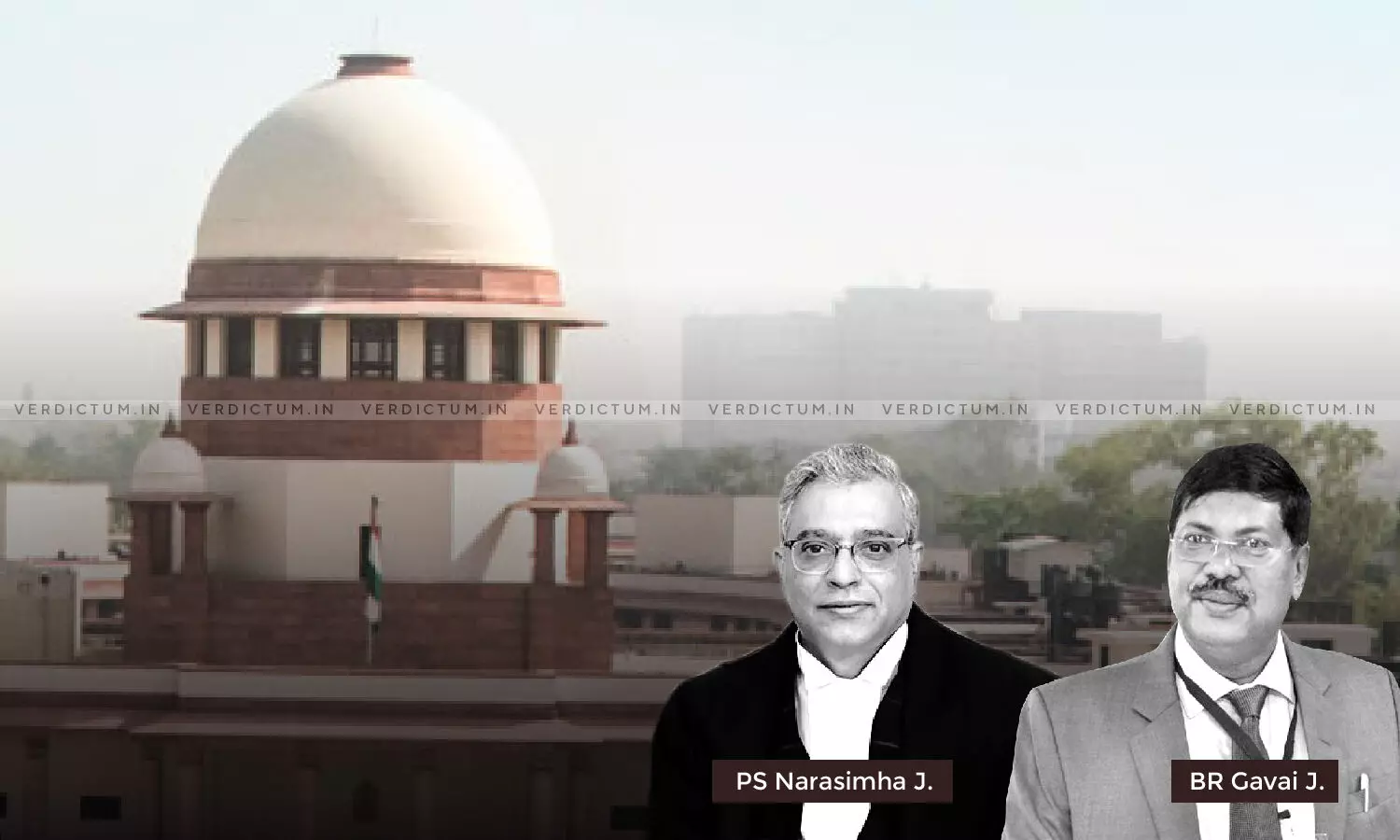
Evidence Adduced Raise Doubts, Improbabilities & Inconsistencies: Supreme Court Acquits Accused In A 20 Year Old Murder Case
 |
|The Supreme Court set aside a murder conviction, emphasizing that the evidence adduced in the case give rise to doubts, improbabilities, and inconsistencies.
The Court noted that a significant disparity exists between the charges against the Appellant and the evidence presented, failing to establish the guilt beyond reasonable doubt.
The Bench comprising Justice B R Gavai and Justice P S Narasimha observed, “there is a yawning gap between the charge against the Appellant and the evidence that the prosecution has adduced. The circumstances do not establish the guilt of the Appellant at all. While the principle applicable to circumstantial evidence requires that the facts must be consistent with the hypothesis of the guilt of the accused, in the present case the evidence adduced gives rise to doubts, improbabilities and inconsistencies”.
Advocate Pranab Kumar Mullick appeared for the Appellant and Additional Advocate General Ajay Bansal appeared for the State.
The Appellant, convicted under Section 302 read with Section 34 of the Indian Penal Code, 1860 (IPC), and sentenced to life imprisonment by the Trial Court for the murder of Samsher Singh. The Appellant appealed to the Supreme Court challenging the High Court's affirmation of the conviction and sentence. The prosecution asserted that the complainant reported the disappearance of Shamsher Singh to the Assistant Sub-Inspector, who observed the deceased receiving phone calls and leaving on his motorcycle. After discovering the deceased's body, witnesses noted injuries, and the police were informed. Crucial statements from witnesses Rajesh and Jogi Ram, who reported seeing suspicious individuals near the crime scene, were presented.
The Court observed that the former Sarpanch of the village provided testimony regarding the confession of the Appellant and co-accused about the murder of the deceased. The co-accused revealed a debt to the deceased and, apprehensive about potential embarrassment upon the demand for repayment, they conspired to kill him. The Appellant led the deceased to a specific location where other accused were already present. They assaulted and killed the deceased with dandas, disposing of the body in a nearby field. The former Sarpanch presented the accused before the SHO at the Police Station.
In addition to the mentioned contradiction, the Court noted another significant aspect concerning the extra-judicial confession. The co-accused stated in his Section 313 CrPC statement that they were arrested on April 11, 2004, not on April 17, 2004. This statement was corroborated by the deposition of Prosecution Witness no 11, who read news about the murder on April 12, 2004, and on April 13, 2004, saw the accused with the police. If Prosecution Witness no 11's statement was accepted, the arrest had occurred by April 13, 2004, casting doubt on the credibility of the extra-judicial confession on April 17, 2004. The prosecution heavily relied on Prosecution Witness 11's evidence, and the Trial Court and High Court based the conviction on this witness's statement. The Court noted that these factors were sufficient to reject the version of Prosecution Witness-10.
The Bench observed that the Prosecution Witness 11's evidence, relied upon by both the Trial Court and the High Court, was unreliable. As a chance witness, he provided conflicting accounts of the incident on April 10, 2004, first while travelling from Chandigarh to Hisar and later when he chanced upon the police with the accused on his way back to Chandigarh. His testimony raised doubts due to inconsistencies, such as the extended travel time, lack of knowledge about the car's registered owner, and the improbable details he claimed to have observed during the incident. The Court deemed him to be an unreliable witness with too many coincidences in his version.
Furthermore, the Court noted that the Prosecution Witness -12, a chance witness relied upon by the prosecution for the last-seen theory, raised doubts due to inconsistencies in his statement. Claiming to witnessed the incident during his evening walk between 9.45 and 10 PM, he alleged that he observed three accused on a motorcycle, noting blood-stained clothes and recording the registration number simultaneously. However, the lack of evidence regarding how he recorded the number, his limited education up to the 6th class, and the improbable details of the incident made his version highly doubtful. Moreover, his delayed report of the incident, two days later, and the choice to go to the Police Station instead of the nearby police chowki further diminished the credibility of his testimony.
The Bench observed that the Prosecution Witness -16, a witness relied upon by the prosecution, claimed to have seen the deceased with A-2 at Karnal bypass T-Point. However, the witness's testimony lacked credibility as he did not know the driver of the vehicle he travelled in, and he failed to mention Prosecution Witness -12, who supposedly witnessed the same event. The witness's version was considered highly improbable and unreliable.
Furthermore, the Court noted inconsistencies regarding the weapons involved in the crime, with the recovery of only sticks while the deceased suffered an incised wound from a sharp-edged weapon, which was not recovered. The FSL report discrepancies and the absence of independent witnesses during recoveries were highlighted, casting doubt on the prosecution's case.
The Court observed that the Appellant made detailed submissions on the recovery of the body, place, and time, along with the alleged motive. However, the Court found it unnecessary to delve into those aspects. With no eyewitnesses and reliance on circumstantial evidence, the Court held that the prosecution failed to establish the guilt of the Appellant. Noting discrepancies, doubts, and inconsistencies in the evidence, the Court held that the prosecution had not proven its case beyond a reasonable doubt.
Accordingly, the Court acquitted the Appellant and set aside the impugned order.
Cause Title: Pradeep Kumar v State Of Haryana (2024 INSC 21)